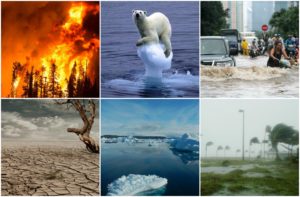Machine learning for understanding European climate extremes
Background

Weather and climate extremes have enormous impacts on society and the environment, and can result in major disasters and damage. A deeper understanding of the factors and mechanisms that influence extremes and their changes is vital and urgently needed for the development of informed policies for mitigating and adapting to climate change across a wide range of climate-sensitive activities and sectors. A large source of uncertainty is due to internal variability in the climate system (Colfescu and Schneider 2020), which in large part stems from the associated atmospheric circulation.
The risk of extreme temperatures over some regions can be linked to changes in the frequency and duration of regional circulation patterns (Horton et al. 2015). For example, the heat wave of the summer of 2003 was characterized by a persistent blocking anticyclone. Extremes can be accompanied by hemispheric-wide anomalous atmospheric circulation patterns, which manifest as quasi-stationary planetary waves (e.g., Teng et al. 2013). These played an important role, for example, in the 2003 European and 2010 Russian heat waves.
Aim
This project will tackle the following question: To what extent do large-scale planetary waves contribute to generating extremes over Europe? The analysis aims at accounting for interactions across temporal (seasonal to interannual to decadal) scales and at building a dynamic portrait of the link through the extremes cycle.
How will you work
You will use a combined approach of ML techniques and climate modeling to understand how atmospheric circulation module extreme events over the Northern Hemisphere. You will work with scientists from NCAS as well as from the University of Edinburgh. You will have the possibility to liaise and interact with scientists from Climate Change Artificial Intelligence (CCAI, https://www.climatechange.ai/) an organization bringing together Artificial Intelligence professionals from both the industry and Academia. You will have the opportunity to work in a unique team of modelers, and data analysts – which will comprise both climate and weather scientists as well as data scientists – who will guide and develop your already existent skills along with new ones. NCAS will also offer the opportunity for you to take part to outreach activities. You will have access to the UK NERC supercomputing facilities for the part of your work involving modeling and data analysis.
Methodology
A combination of ML (GANs) and models (e.g., the NCAR CESM Large Ensemble, a 30-member ensemble of 1920-2080, and other data sources) data will be used.
Key research questions
- What are the main large-scale planetary circulation patterns associated with extreme events in Europe, and how are they changing?
- What are the fundamental interactions temporally – seasonal to interannual to decadal – that modulate these patterns?
- What are the fundamental interactions spatially (e.g. links to extensive climate variability modes like El Nino or Atlantic Multidecadal Variability) – which modulate these patterns?
- How will these patterns change in the future in the context of climate change?
Requirements
This project will involve a lot of mathematical thinking (equations handling, analytical reasoning, data analysis, and statistical thinking). Hence, critical maths skills, as well as good programming skills (Python, NCL(NCAR Command Language), and/or Matlab), is a requirement. Curiosity, willingness to learn, and an independent manner of thinking as well as a passion for the project, are highly desirable.
Fit with NERC research directions
The proposed research is well aligned with the NERC’s “Climate and climate change” research subject, and in particular stretches across the “Large scale atmospheric dynamics”, “Water in the atmosphere”, “Climate and climate change”, and “Regional weather and extreme events” research areas. The project will directly address challenges identified in the NERC goal to “understand and predict how the Earth System works” with regard to improving the understanding of processes in climate and how they drive its variability, especially those associated with climate change and the changing of extreme events dynamics and frequency, and their representation in models. The project is timely as it addresses relevant and compelling science problems whose uncertainties severely undermine our ability to gain a better understanding and quantification of how regional climate will evolve in the future. In particular and in line with the NERC Business of the Environment strategic plan, results from this project will tell us how environmental processes control natural resources, and water availability in particular, will help to understand processes that create natural and man-made hazards and will inform how the processes of natural variability and man-made change work across scales. The synergy with other existing national collaborators is also an exciting opportunity.
